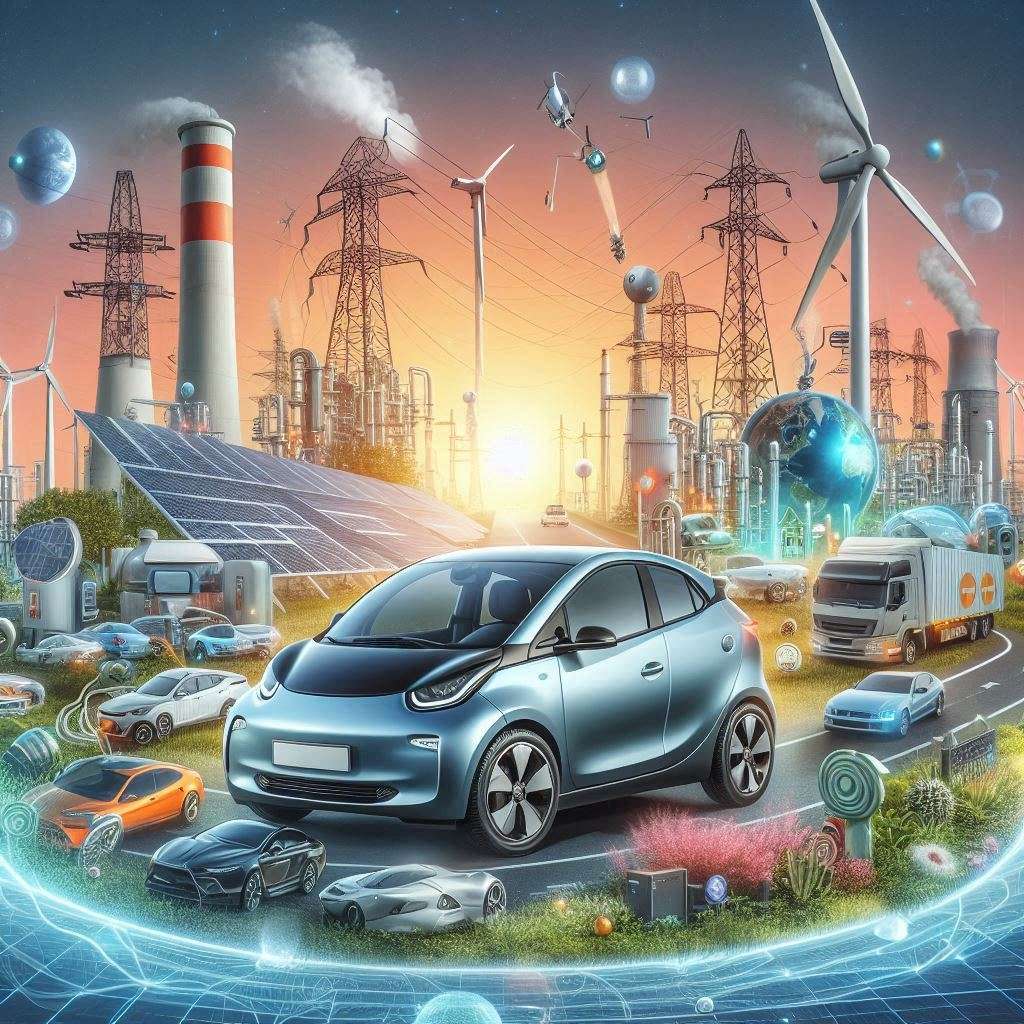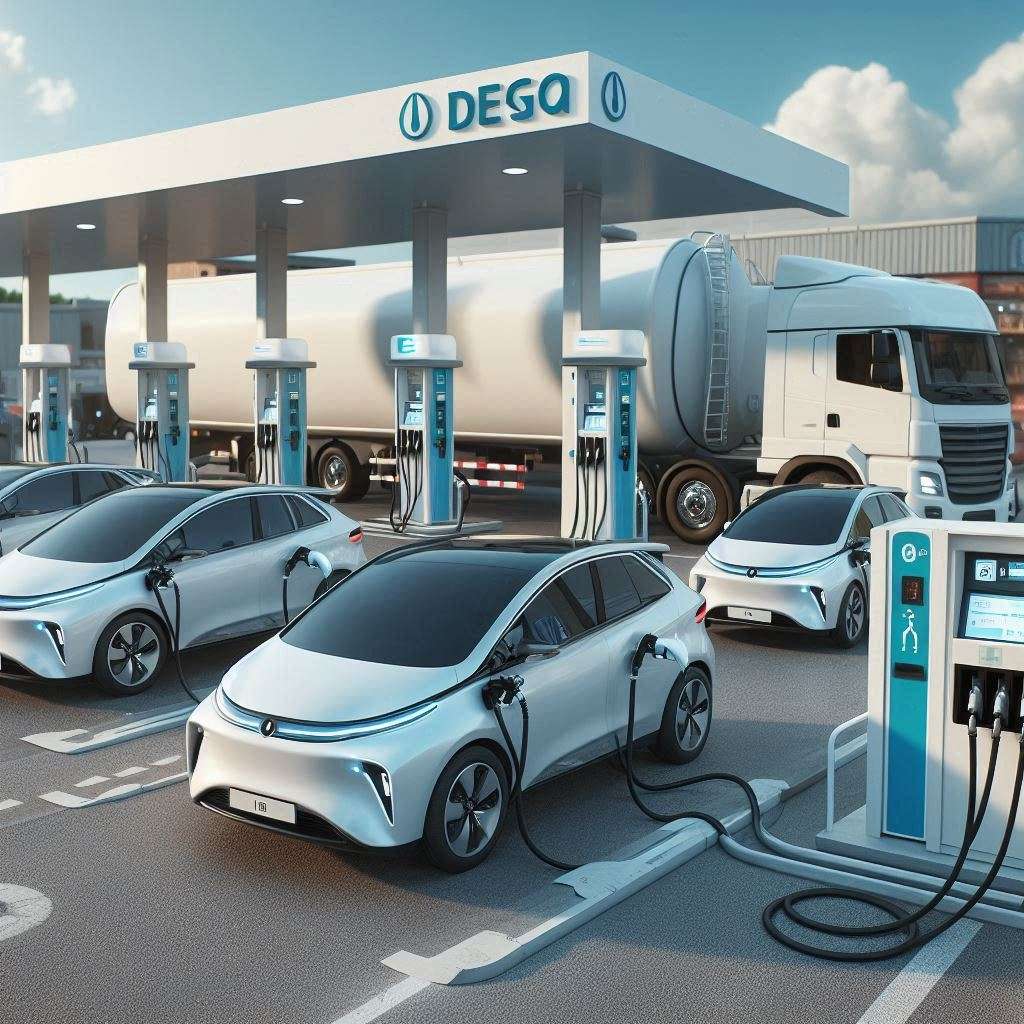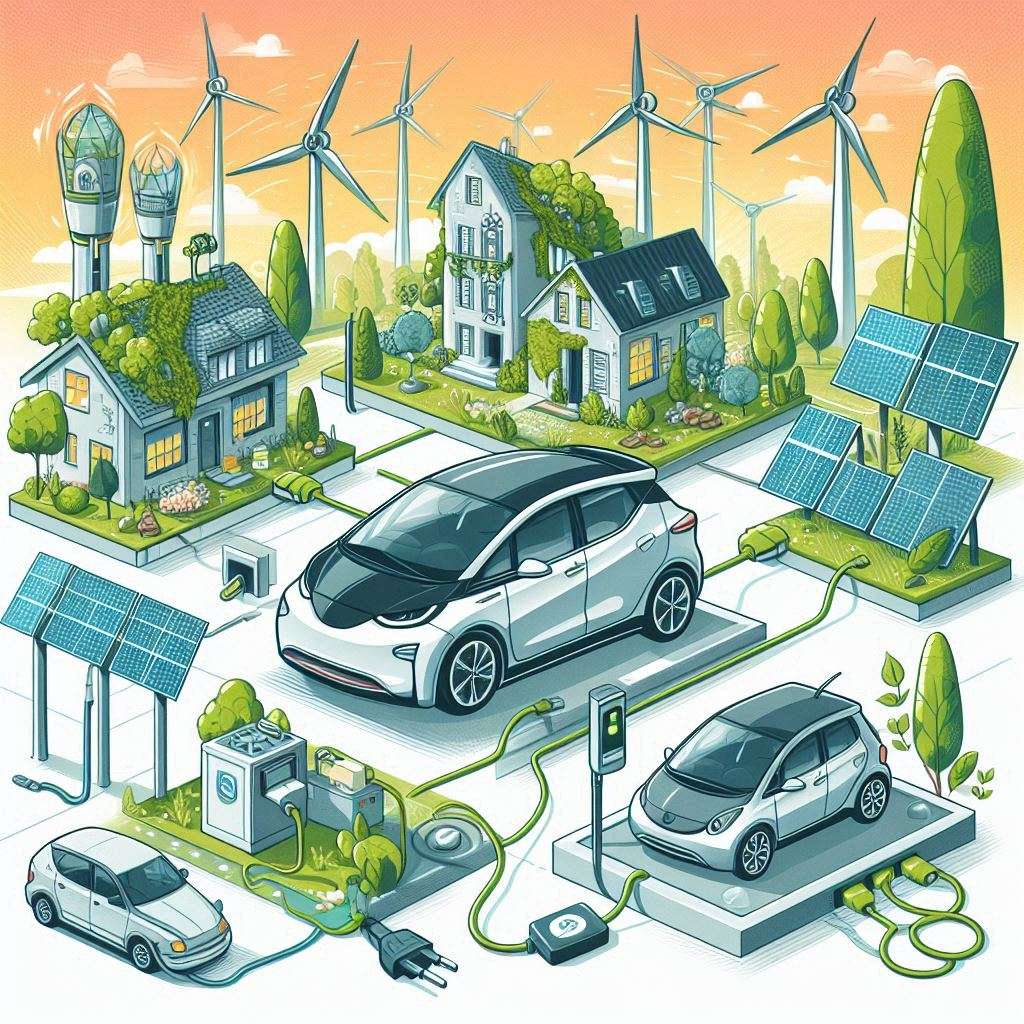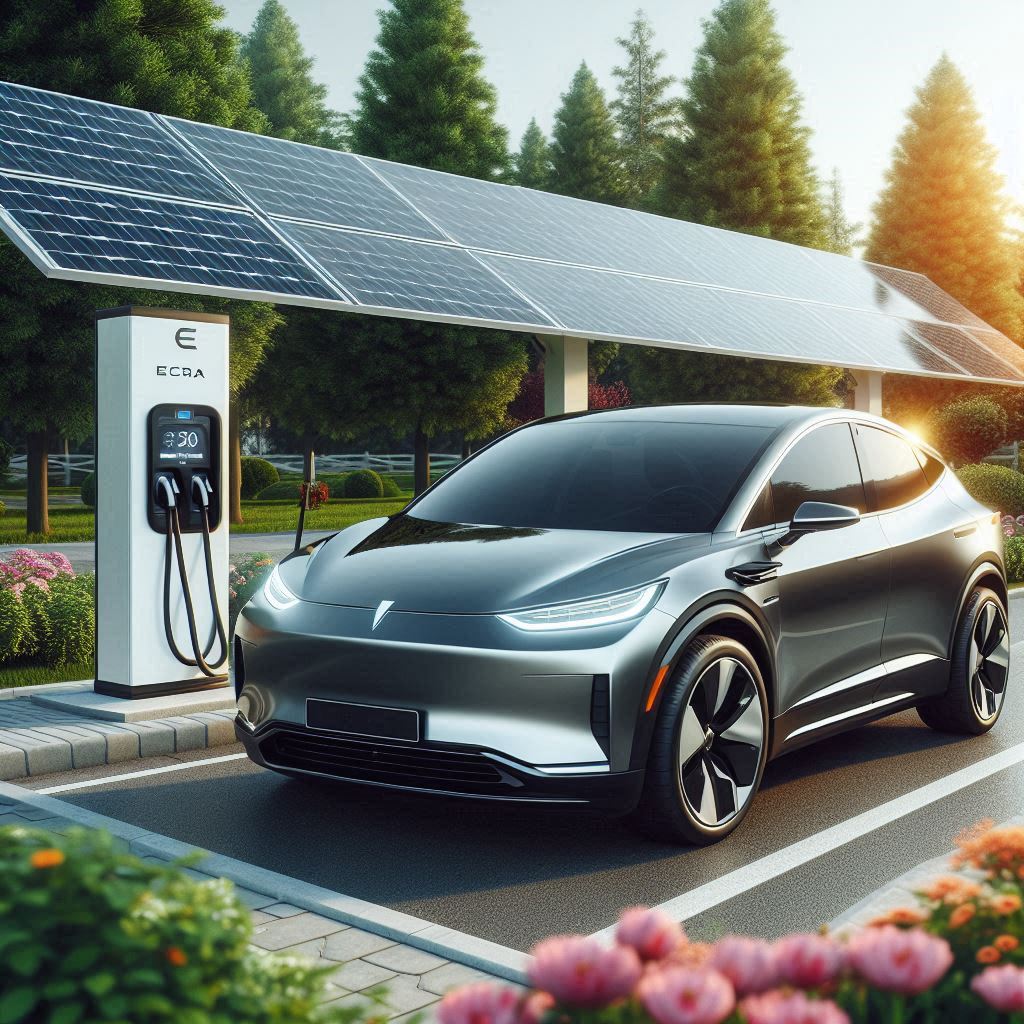The EV Myth: Are EVs worse for the environment?
Electric Vehicles cause pollution because they are powered by dirty power plants. Are EVs worse for the environment?
You’ve probably heard it before: electric vehicles are actually worse for the climate than petrol cars because of the emissions produced by power plants generating the electricity needed to charge them.
Given the bad rap power plants have had in recent years, it’s not hard to believe that we’re just moving the pollution from the tailpipe to the power station. Any myth that’s easy to believe is going to have legs.
But is this claim really supported by the facts? As you weigh the environmental impact of your next car purchase, it’s crucial to separate myth from reality. Let’s take a closer look at the numbers and explore how electric vehicles stack up against their petrol counterparts in terms of greenhouse gas emissions – and what it means for your community.
The EV Myth Busted
Efficiency
Distribution
Electricity is much easier to distribute, as it goes over wires that don’t emit any pollution. Petrol and diesel requires energy to extract, transport, refine, transport, store, transport again and finally deliver into the car. All that extracting, pumping, refining, and moving in ships and trucks requires energy. Sometimes this involves more fuel being used to transport the fuel. Often though, and quite ironically, it uses electricity. The amount of electricity involved in producing and distributing fuel is quite staggering. It’s easier to use that electricity to just power the car.
EPA Figures
The Myth Debunked in Detail
Before we investigate the facts, let’s take a step back and understand why this myth has been perpetuated in the first place.
The Common Misconception
One of the primary reasons this myth has gained traction is that it’s easy to assume that the emissions from power plants used to generate electricity for EVs would outweigh any benefits of switching from petrol cars. It’s a simplistic argument that seems to make sense at first glance, but as we’ll see, it’s based on incomplete information.
Separating Fact from Fiction
From a bird’s-eye view, the math seems straightforward: if power plants emit pollutants, and EVs rely on those power plants for electricity, then EVs must be contributing to the problem. But this oversimplification ignores the complexities of our energy landscape.
No Tailpipe Emissions
Reality check: EVs produce zero tailpipe emissions. That’s right, zero. You don’t have to worry about pollutants like particulate matter, nitrogen oxides, or volatile organic compounds spewing out of your exhaust pipe.
Accounting for Electricity Generation
To get a complete picture of EV emissions, we need to consider the electricity used to charge them. The good news is that even when factoring in electricity generation, EVs typically have a smaller carbon footprint than petrol cars.
The way electricity is generated varies widely depending on the region. In areas where renewable energy sources like wind or solar power are prevalent, the carbon footprint of EVs is significantly lower. According to the EPA, in 2020, renewables became the second-most prevalent U.S. electricity source. By using tools like the EPA’s Power Profiler interactive web page, you can learn more about the energy mix in your region and estimate the emissions associated with charging your EV.
As the world continues to shift towards renewable energy sources like wind and solar, the carbon footprint of EVs decreases dramatically.
The Variability of Power Plant Emissions
Fossil Fuels vs. Renewable Energy Sources
Fossil fuels like coal and natural gas emit significant amounts of carbon pollution, while renewable energy sources like wind, hydro and solar do not. In 2020, renewables became the second-most prevalent U.S. electricity source, accounting for a substantial portion of the energy mix.
The Impact of Local Energy Mix
Renewable energy sources have a negligible impact on greenhouse gas emissions, making them an attractive option for reducing the carbon footprint of EVs. The local energy mix, therefore, plays a critical role in determining the environmental benefits of electric vehicles.
Power plants that rely on fossil fuels emit significantly more greenhouse gases than those that use renewable energy sources. For instance, coal-fired power plants emit an average of 450kg of CO2 per megawatt-hour, while wind turbines emit virtually zero emissions. By understanding the energy mix in your region, you can better appreciate the environmental benefits of electric vehicles. The EPA’s Power Profiler interactive web page allows Americans to input a zip code to discover the energy mix in their area, providing valuable insights into the environmental impact of EVs where you live. In Australia, energy mix is generally published on a statewide basis. QLD and WA are considred the dirtiest, while South Australia and Tasmania are considerably cleaner. Tasmania is carbon neutral and both states are working towards 100% renewable. Other states fall somewhere between these extremes.
Fuel Distribution Methods
The tailpipe emissions of these delivery methods is often overlooked in calculations. Additionally the fuels need to be pumped into and out of each vehicle along the various stages of production and distribution.
Even pipelines use energy as the fuel needs to be pumped along the pipes. Often these pumps use electricity from the grid to get fuel from source to destination.
The Numbers Don’t Lie
For a clearer understanding of the environmental impact of EVs, let’s probe the data.
Comparing GHG Emissions of EVs and Gasoline Cars
Emissions from EVs and petrol cars vary significantly. According to the US EPA and DOE’s Beyond Tailpipe Emissions Calculator, here’s a breakdown of the estimated GHG emissions:
| Vehicle Type | GHG Emissions (g/mi) |
|---|---|
| Electric Vehicle (EV) | 150-200 |
| Gasoline Car | 360-420 |
As you can see, EVs produce significantly fewer GHG emissions than petrol cars, even when considering power plant emissions, coming in at less than half on average.
The Role of Renewable Energy in Reducing Emissions
To minimize the carbon footprint of EVs, the role of renewable energy in reducing emissions cannot be overstated.
Petrol cars, on the other hand, rely on fossil fuels, which are a major contributor to GHG emissions. In contrast, EVs can be powered by renewable energy sources like wind and solar, reducing their overall carbon footprint. As the grid becomes increasingly reliant on renewable energy, the emissions associated with EVs will continue to decrease. In fact, according to the EPA, in 2020, renewables became the second-most prevalent U.S. electricity source, paving the way for a cleaner energy future.
Tools for Estimating Emissions
Once again, understanding the environmental impact of electric vehicles requires a closer look at the specifics. Luckily, there are some fantastic tools available to help you estimate emissions and make informed decisions.
EPA’s Power Profiler Interactive Web Page
Any curious individual can learn more about electricity production in their area by visiting the EPA’s Power Profiler interactive web page, gaining valuable insights into the environmental implications of charging your EV.
The Beyond Tailpipe Emissions Calculator
Interactive tools like the EPA and Department of Energy’s Beyond Tailpipe Emissions Calculator allow you to estimate the greenhouse gas emissions associated with charging and driving an EV or a plug-in hybrid electric vehicle (PHEV) where you live.
It’s impressively user-friendly: you can select an EV or PHEV model and type in your zip code to see the CO2 emissions and how they stack up against those associated with a petrol car. This calculator provides a personalised perspective on the environmental benefits of switching to an electric vehicle, taking into account the unique energy landscape of your region.
Final Words
Now that you’ve seen the facts, it’s clear that the myth about EVs being bad for the environment due to power plant emissions is just that – a myth. You’ve learned that even when accounting for electricity generation, EVs typically have a smaller carbon footprint than petrol cars. And with the increasing adoption of renewable energy sources, the environmental benefits of EVs will only continue to grow. So, the next time someone tries to debunk the eco-friendliness of EVs, you’ll be armed with the knowledge to set the record straight.






